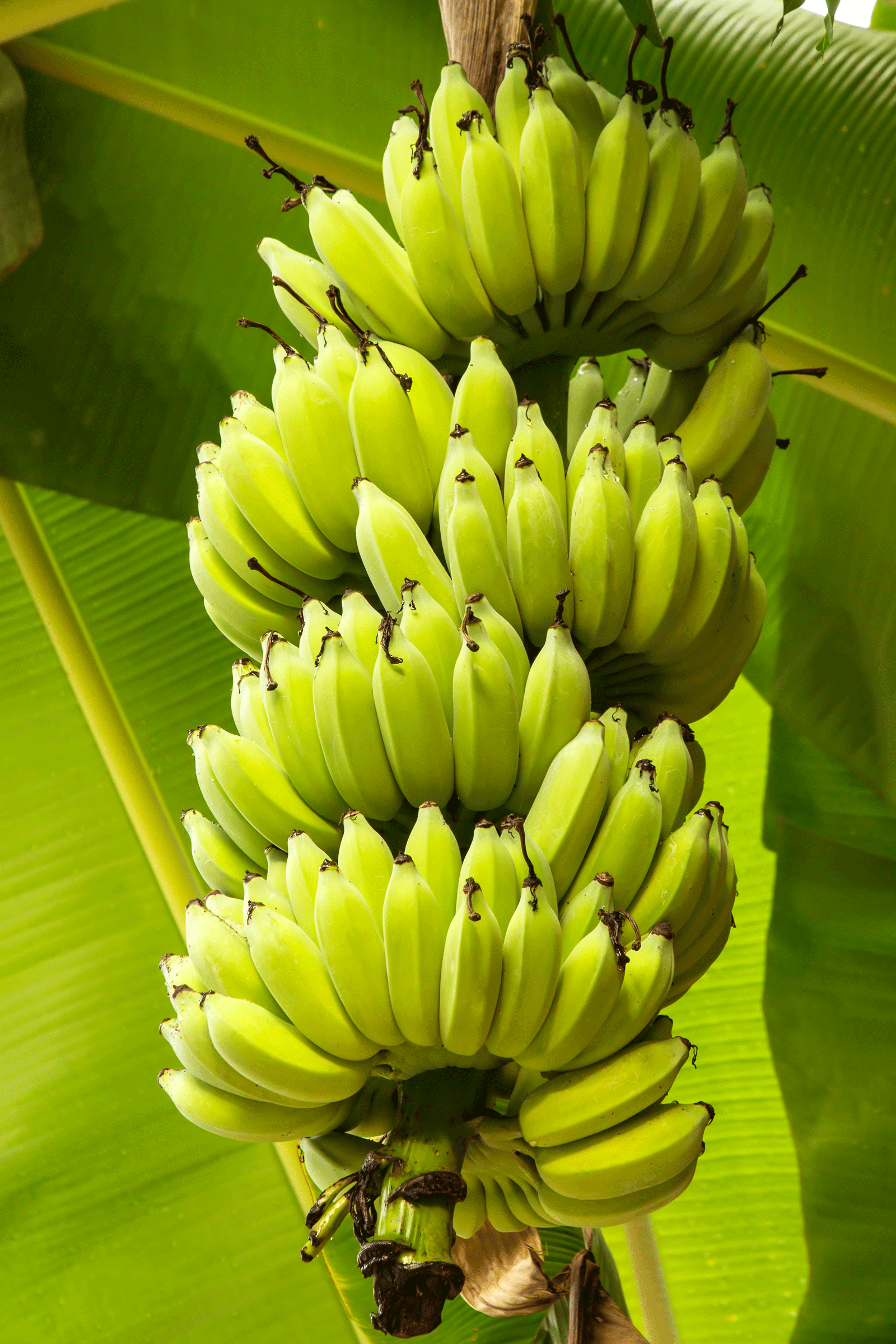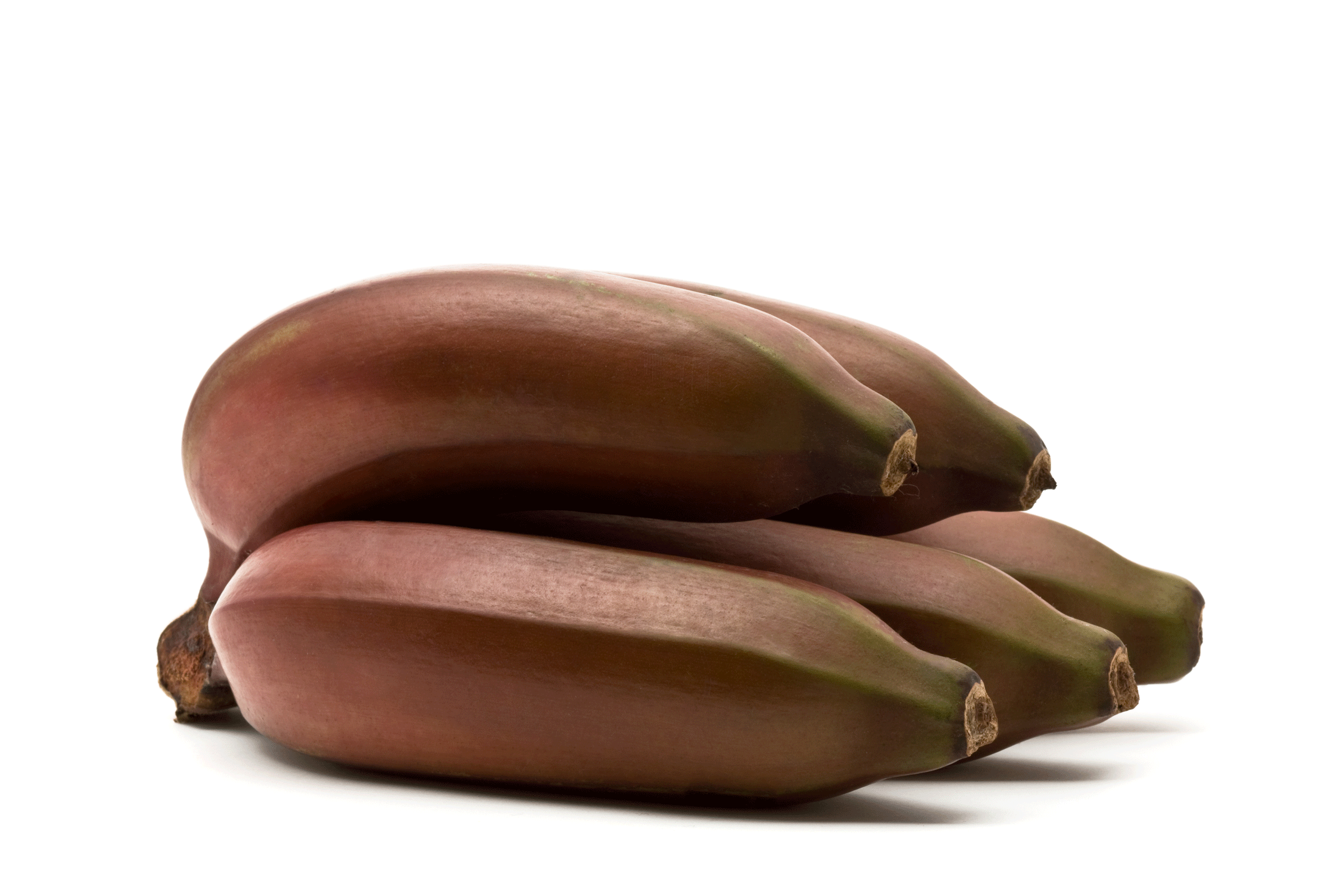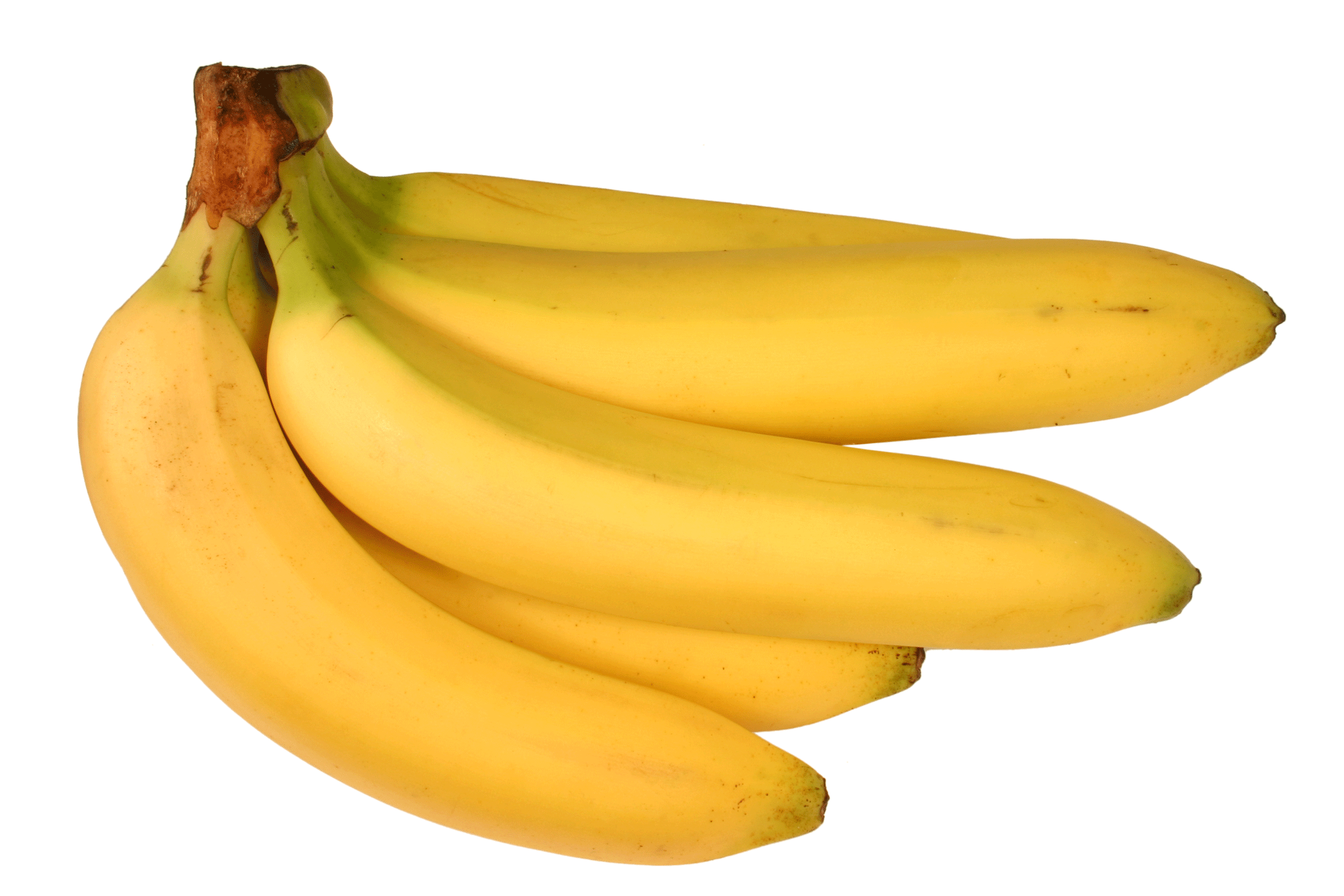Top Banana
Air Date: Week of April 18, 2014

Cavendish bananas may not be the tastiest variety but they grow in huge bunches which makes them inexpensive to grow and bring to international markets. (bigstockphoto.com)
In honor of Earth month we’ve been revisiting some of our favorite stories. This week it’s Bob Carty’s 2004 tale of the ubiquitous Cavendish banana, and the dire threats to its future.
Transcript
CURWOOD: We check in on some of our past stories during April - Earth Month - to find out what's happened with them since, and this week we're going bananas. A decade ago, producer Bob Carty reported that the world's most successful fruit - the big yellow banana - is under threat and might even be at risk of disappearing within this decade. Well, there are still bananas aplenty on the store shelves so that fate has been averted, but the threat remains. Here's Bob's documentary “Will The Banana Split?”
[SOUND OF OUTDOOR MARKET IN HONDURAS]
MCCARTY: In the Central American country of Honduras, the markets are full of bananas. And two things strike you right away. One is that the bananas on sale here are not the uniform and unblemished bananas we get in our supermarkets. Here, old men and young girls are selling bananas in all kinds of shapes and sizes.
CLIP: (Bob talks to vendors in market about different bananas… It’s a Philippino? So this is a plantain? What do you call these tiny little bananas there about a finger long? How many can you eat? Five?)
MCCARTY: And that’s the other thing you notice here. People eat a lot of bananas. Some shoppers are carrying off half a stalk – 60 or 70 ripe bananas. North Americans eat about 28 pounds of bananas a year … people here and in Africa eat as much as 500 pounds. Randy Ploetz is a professor of plant pathology at the University of Miami. He explains that 90% of all bananas are never exported, they’re eaten locally. They are the world’s fourth most important crop.
PLOETZ: Three to four hundred million people in the world depend upon it as primary source of carbohydrates. And international commerce in banana is worth about $5 billion a year.
MCCARTY: Which means a lot of people, a lot of nations, depend upon the banana tree.
PLOETZ: It’s actually a herb – it’s not a tree.
CARTY: You’re kidding – a herb?
PLOETZ: Yes. In fact there are bananas up to 15-20 feet – they are the world’s largest herbs. It’s really an ancient crop – 8,000, 9,000 years old.
MCCARTY: Now what’s also interesting is that the banana, which we usually associate with South America, is actually Asian. Muslim traders brought the banana from Asia to Africa. And then slave traders brought them to the Caribbean and Central America to feed their slaves. But according to Virginia Scott Jenkins, the author of “Bananas – An American History,” the fruit only became big business in the 1880s - with the development of refrigerated steam ships.
JENKINS: Then it was possible to transport bananas from the Caribbean to North American ports. So, US fruit companies went into Central America, purchased millions of acres of land and cut down the rainforest and planted thousands of acres of bananas.
[SOUNDS OF JUNGLE]
MCCARTY: And so the sounds of the rainforest were replaced by …
[SOUNDS OF BANANAS ON CABLES]
… the sound of banana stems being trundled from field to packing plant on overhead networks of cables. That’s how some of the most diverse ecologies on earth disappeared.
Growing bananas on an industrial scale was one thing. Next, firms like the United Fruit Company had to get northern consumers to buy them. Remember that in the 1880s, most even know what a banana looked like. And then there was a little cultural problem … the suggestive shape of the banana.
JENKINS: Well, the shape of the banana is a little difficult for some people, particularly in the Victorian era. Bananas were not considered very genteel. One of the interesting things I found was early instructions for how to eat a banana – etiquette books on what to do when you find a banana in front of you at a formal dinner party.
MCCARTY: Indeed – what to do? Well, readers of the 1888 edition of “The Correct Thing In Good Society” learned that the LAST thing you did was pick up a banana, pull back the skin and bite off a piece – especially if you were a woman. No, the proper way to face the fruit, if you had to at all, was with a silver fruit knife and fork.

Bananas come in all shapes, sizes and colors. (bigstockphoto.com)
The banana companies were able to overcome these cultural impediments, and they did it with aggressive marketing, extolling the virtues of the fruit, and pricing it right.
JENKINS: They sold them as the cheapest fruit on the market – and that was a deliberate decision by the fruit companies to undersell local fruit. And the marketing of bananas is absolutely amazing. The United Fruit Company marketed bananas with many health claims – for people trying to gain weight, people trying to lose weight – people who had tuberculosis, female complaints, asthma, all kinds of things.
[SONG: “I LIKE BANANAS”]
MCCARTY: The marketing campaigns worked. By the early 1900s bananas were everywhere. Even showing up in popular culture, especially in songs. Some of them … uh, rather sexual …
[SONG: “LET ME PUT MY BANANA IN YOUR FRUIT BASKET”]
… and some of them just kind of silly.
[SONG: “MY WIFE RAN OFF WITH A BANANA”]
[SOUNDS OF JUNGLE]
MCCARTY: Back in Central America, the banana business brought jobs and economic growth, but also a number of political problems. There was the predictable corruption that takes root when a foreign company buys up a big chunk of your nation. Then there were the company towns, the union-busting, the refusal by banana companies to pay taxes. All of which aroused a certain amount of local anger and protest, which in turn was met with American gunboat diplomacy.
[SONG – “BANANA REPUBLIC”]
MCCARTY: In the early decades of the 20th century, US Marines occupied Honduras five times, Panama four times, Nicaragua twice, to say nothing of other kinds of interventions in El Salvador, the Dominican Republic, Cuba, and Guatemala. And decade after decade banana production kept rising. But another problem was developing. Diseases kept killing banana plants. Randy Ploetz says the problem was the kind of banana they were growing.
PLOETZ: “Big Mike” - Gros Michel. A really excellent banana, produced very large bunches and very large fingers. You could chop the entire bunch down and throw it in the back of a railroad car and take it off to a ship so it didn’t require any special handling. It’s a really good banana.
[SONG: DAY-OH]
Oh, of course, how could I forget that – yeah now in fact in that song he’s talking about the Gros Michel, that was the banana that made the Jamaican trade so successful. Big Mike has all these great attributes that I mentioned earlier, but its Achilles heel is it’s very susceptible to Race One Panama disease – it’s a disease that’s caused by a soil-born fungus – it kills the plant outright.
And not only that, Panama disease couldn’t be controlled with fungicides. The only way the banana companies could keep ahead of Panama disease was by moving their plantations, cutting down more virgin rainforest to use soil that wasn’t diseased. But by the 1950s, they were running out of new rainforest to cut down. The Big Mike export banana was being wiped out.
[SONG: YES, WE HAVE NO BANANAS]
MCCARTY: But then we got lucky. And for this part of the story, meet another banana aficionado...
MARTINEZ: To me, if the world didn’t have bananas it would be a very boring place (laugh).
MCCARTY: This is Adolfo Martinez, the director-general of the Honduran Foundation for Agricultural Research. Adolfo explains that just as the Big Mike was withering away on the stem, they discovered the Cavendish banana, a banana that tasted almost as good as the Big Mike, but was also resistant to Panama disease. It was, however, a delicate fruit – it had to be shipped in protective boxes and plastic, and as Adolfo Martinez points out, it was very susceptible to another kind of banana disease called Black Sigatoka. And there’s only one way to fight that.
MARTINEZ: You have to use pesticides, you have to use fungicides with Cavendish – up to 50 times a year – that’s about weekly. The cost of that varies between $500 to 800 dollars a year per hectare.
CARTY: That means that a quarter of the price we pay for a bunch of bananas goes to drenching them in pesticides. Food inspectors say they don’t usually detect any pesticide residues in the fruit. The real impact of pesticides is on the health of banana workers and on the environment.
Back now to banana history - where along came, you guessed it, another problem. A new disease appeared just a couple of years ago. It’s a mutant of the old disease, called Tropical Race Four Panama disease. It’s now present in Indonesia, Taiwan, and Pakistan, perhaps elsewhere. And with global trade and travel, experts say it WILL inevitably get to this hemisphere.
MARTINEZ: It will be a disaster. And it will wipe out, completely, the Cavendish production that we have today.
[SONG – “YES, WE HAVE NO BANANAS”]
CARTY: What can be done about this looming disaster? Banana companies could try to develop a fungicide that works on this disease. Experts say that would be costly and would would mean using of a lot of fungicide … which wouldn’t make consumers or banana workers or the environment very happy.
Other experts are promoting a high-tech solution … genetically engineering the banana for resistance to diseases. Professor Randy Ploetz says there are institutes and companies actually working on this – trying to decode the banana’s DNA.
PLOETZ: Genetic engineering offers the glimmer of hope to produce a banana like the Cavendish that has only one thing changed … disease resistance.
[SONG: MELLOW YELLOW]
PLOETZ: But then what happens when you get that banana. I know people in Europe really are strongly opposed to that product. So you would lose a major market if you had that type of banana.
CARTY: Then there’s the possibility of creating a new banana by traditional breeding methods. Mating one kind of banana with another kind to get disease resistance plus good taste. The problem here has to do with sex ... or more precisely, the lack of it.
MARTINEZ: Bananas can produce fruit without pollination. In bananas, the banana plant produces male and female flowers at different times. That’s one of the reasons you don’t find hardly any seeds in banana plants. The other reason is that bananas are sterile per se.
CARTY: They’re sterile?
MARTINEZ: Yes, sterile.
CARTY: They’ve got it all mixed up.
MARTINEZ: Yeah they do – bananas don’t have a lot of sex.
[LAUGHS]
CARTY: Yes, for all its phallic appearance, the commercial banana is sexually decrepit. They’ve been selected over thousands of years precisely because they don’t have seeds. Commercial bananas are propagated by taking shoots from the mother plant. And that lack of sex means that plantation bananas are genetically identical and uniformly susceptible to disease. So, how to get some genetic diversity into commercial bananas?
At the Honduran Agricultural Research Institute Adolfo Martinez likes to show off rows and rows of banana plants that are all different.
MARTINEZ: This is our future we think. Some are big, some are tall – they all have different properties, they have resistance to disease, different flavors.
CARTY: Adolfo has 368 varieties of bananas here (out of about 1000 species that are known around the world by the way). For four decades Adolfo’s institute has been trying to get different varieties to mate with each other – and Adolfo gives them a helping hand. Literally. His workers put ladders up into banana plants and scrape the pollen off the male flowers of some varieties … then, walk over to a field with a different variety of banana, and, by hand, pollinate the female flowers. A few months later they harvest the fruit. They peel and squish the bananas and go through that mush to look for seeds. And they find a few – not many – maybe three in 100 bananas. But those are the seeds of brand new banana varieties. Like the one that Adolfo shows off with the pride of a new daddy.
CLIP: This is the best. It has a huge bunch. It is a plant that is practically immune to Sigatoka, immune to disease, very resistant. They have slightly different flavour than the Cavendish and that is why the company has not accepted it yet. But even if Panama disease comes here we have some alternatives right now.

Cavendish bananas are the variety most commonly found in American markets. (bigstockphoto.com)
CARTY: Aldofo believes his breeding program will save the banana and also help the small farmers of the world who would never be able to afford a patented, genetically modified banana anyway. Adolfo’s new breed is already being used in more than 50 countries. Cuba is growing them because they don’t need pesticides.
[SFX OF SUPERMARKET]
CARTY: But are North American consumers ready for a new banana? The banana companies have spent so much money promoting just one kind of banana that they’re loathe to tackle the huge job of changing public attitudes about what a banana looks and tastes like. So instead of six kinds of apples, and five kinds of pears – we’re offered usually just one kind of banana. Would shoppers eat a banana that might look a little different, taste a bit different, maybe even taste a little better?
SHOPPERS: By all means, I think I would try a great variety of bananas. I would, I’ve seen different kinds. Sure, if it was sweet and I could use it for the same reasons -- smoothies!
MCCARTY: So … it turns out that one of the most likely solutions to the banana crisis is giving consumers more banana choice. And that could be – dare I say it? - APPEALING. For Living on Earth, I’m Bob Carty.
[SONG: CHIQUITA BANANA]
CARTY: Oh, by the way … Chiquita Banana’s line about bananas being from the equator – so don’t put them in the refrigerator … it’s a fabulous rhyme. But it’s not true. Bananas are refrigerated of course on the way to market. The fruit companies wanted people to throw out overripe bananas and buy new ones. But if you put them in the refrigerator the skin does turn black. But the fruit inside stays at the stage of ripeness you prefer.
Links
Living on Earth wants to hear from you!
Living on Earth
62 Calef Highway, Suite 212
Lee, NH 03861
Telephone: 617-287-4121
E-mail: comments@loe.org
Newsletter [Click here]
Donate to Living on Earth!
Living on Earth is an independent media program and relies entirely on contributions from listeners and institutions supporting public service. Please donate now to preserve an independent environmental voice.
NewsletterLiving on Earth offers a weekly delivery of the show's rundown to your mailbox. Sign up for our newsletter today!
 Sailors For The Sea: Be the change you want to sea.
Sailors For The Sea: Be the change you want to sea.
 The Grantham Foundation for the Protection of the Environment: Committed to protecting and improving the health of the global environment.
The Grantham Foundation for the Protection of the Environment: Committed to protecting and improving the health of the global environment.
 Contribute to Living on Earth and receive, as our gift to you, an archival print of one of Mark Seth Lender's extraordinary wildlife photographs. Follow the link to see Mark's current collection of photographs.
Contribute to Living on Earth and receive, as our gift to you, an archival print of one of Mark Seth Lender's extraordinary wildlife photographs. Follow the link to see Mark's current collection of photographs.
 Buy a signed copy of Mark Seth Lender's book Smeagull the Seagull & support Living on Earth
Buy a signed copy of Mark Seth Lender's book Smeagull the Seagull & support Living on Earth

